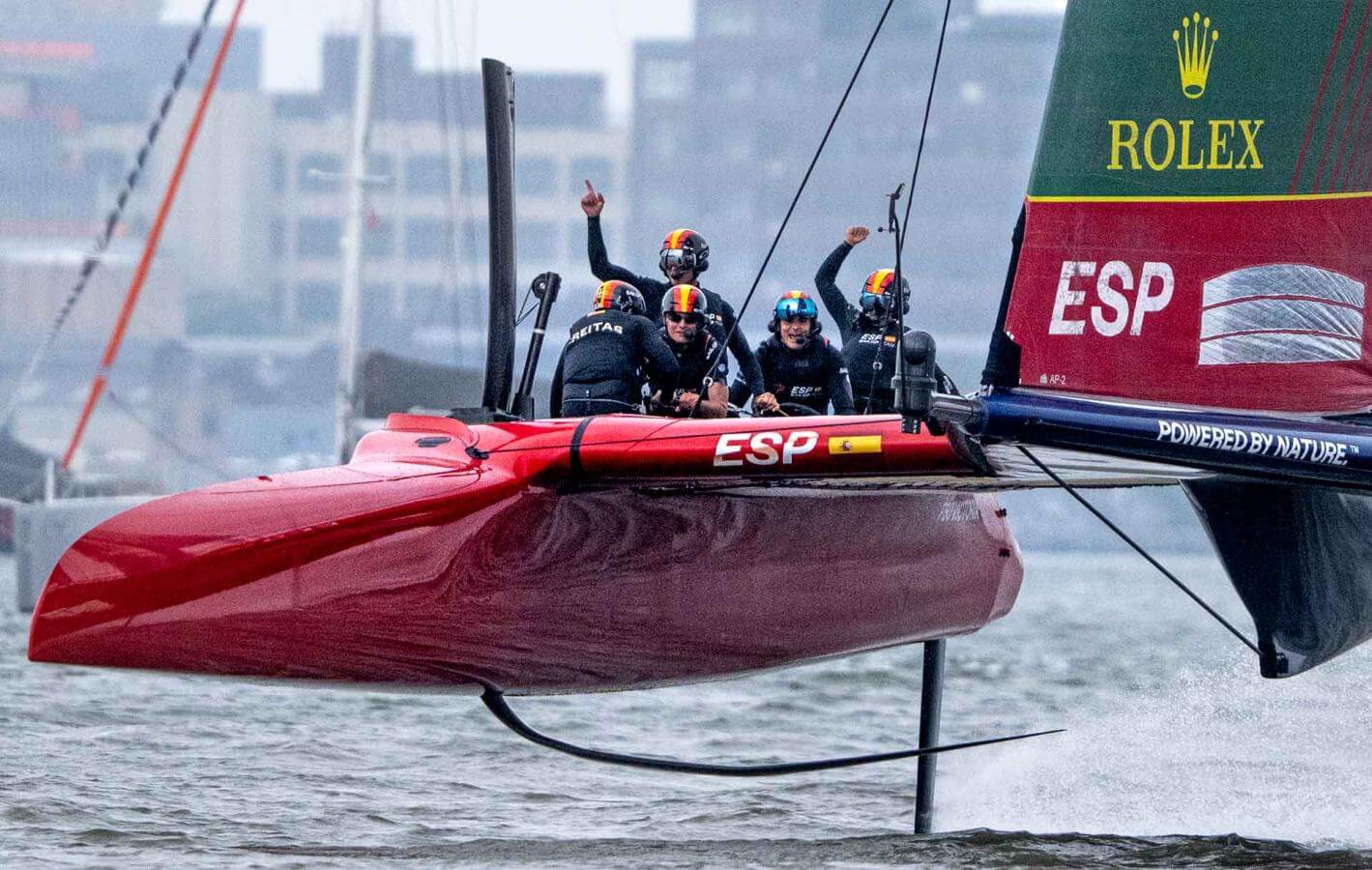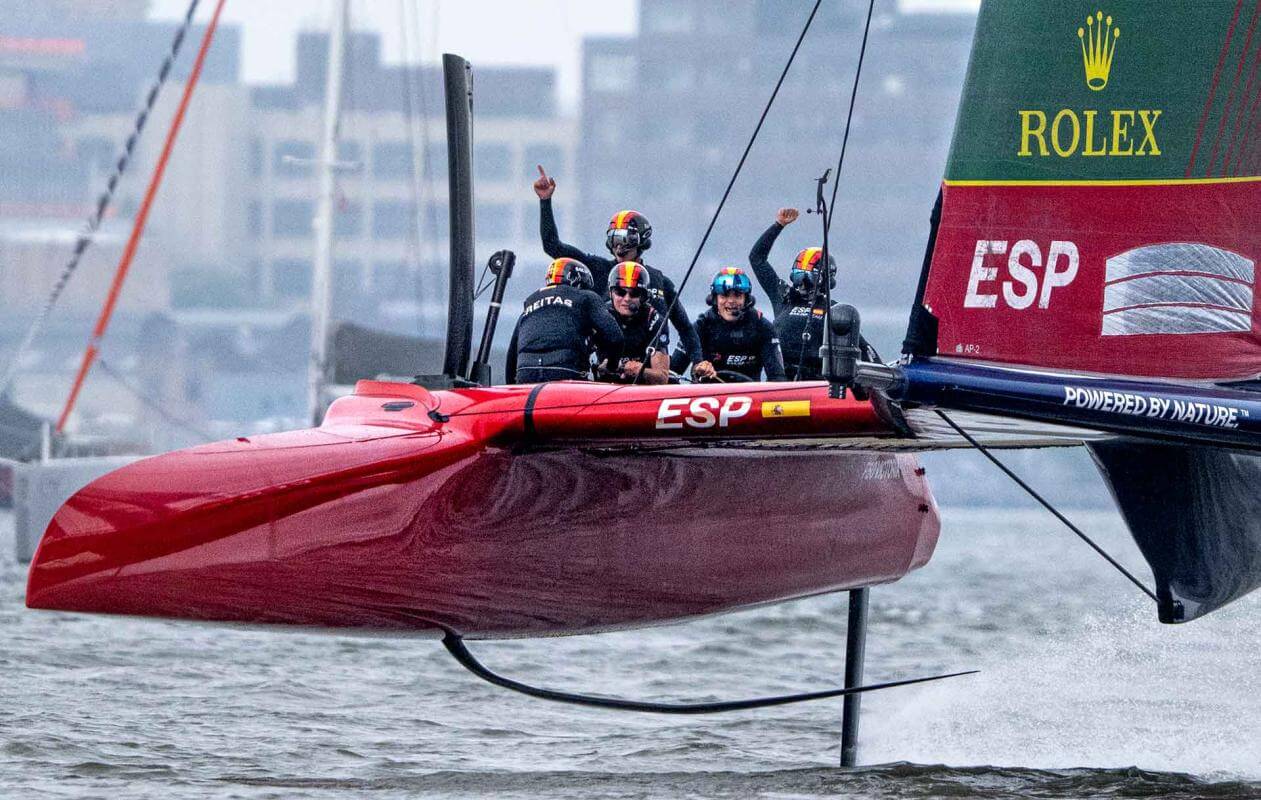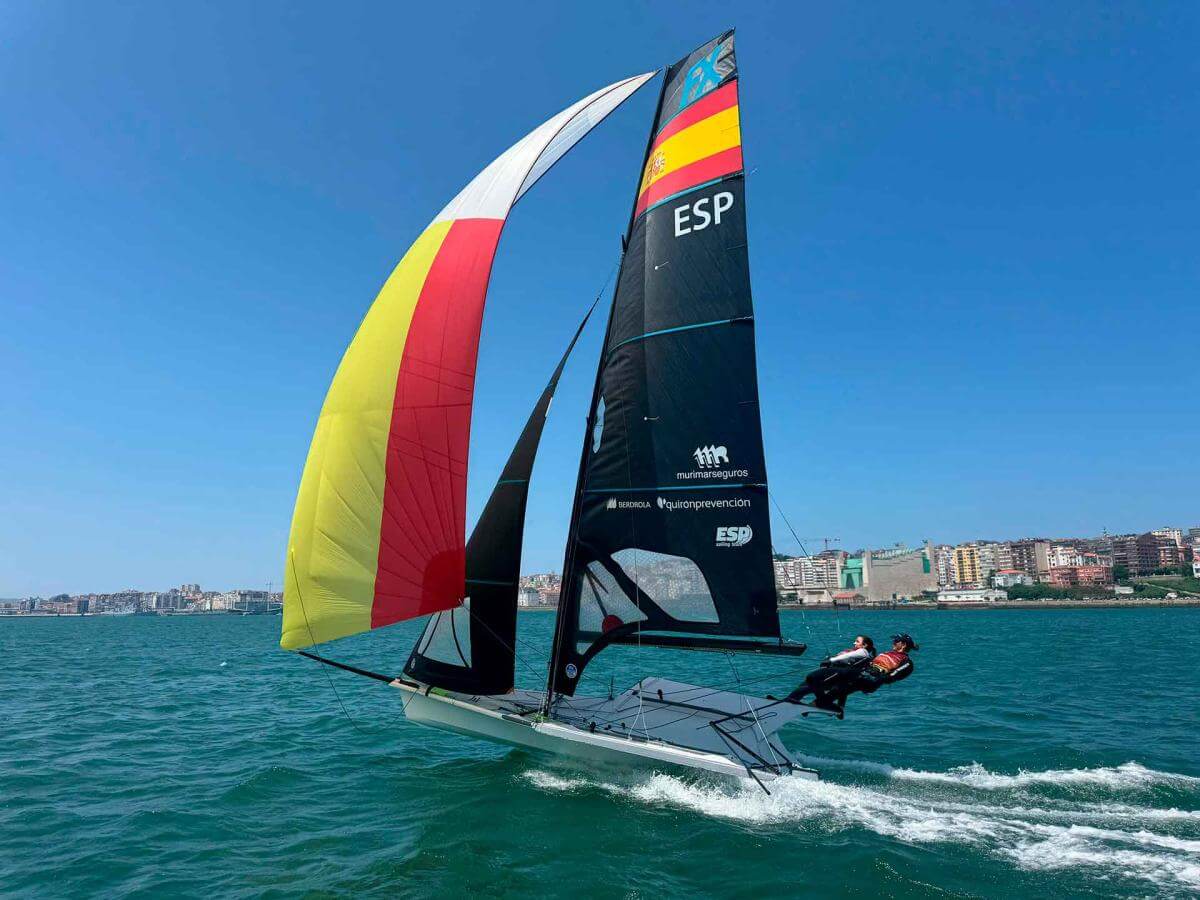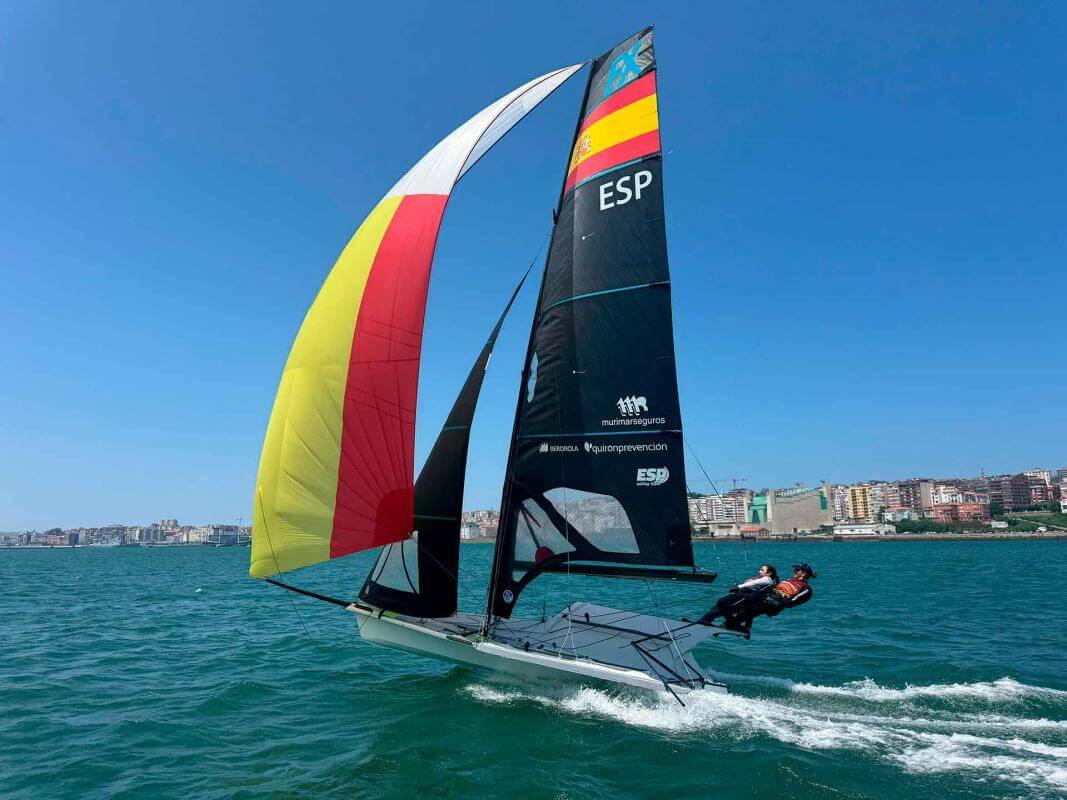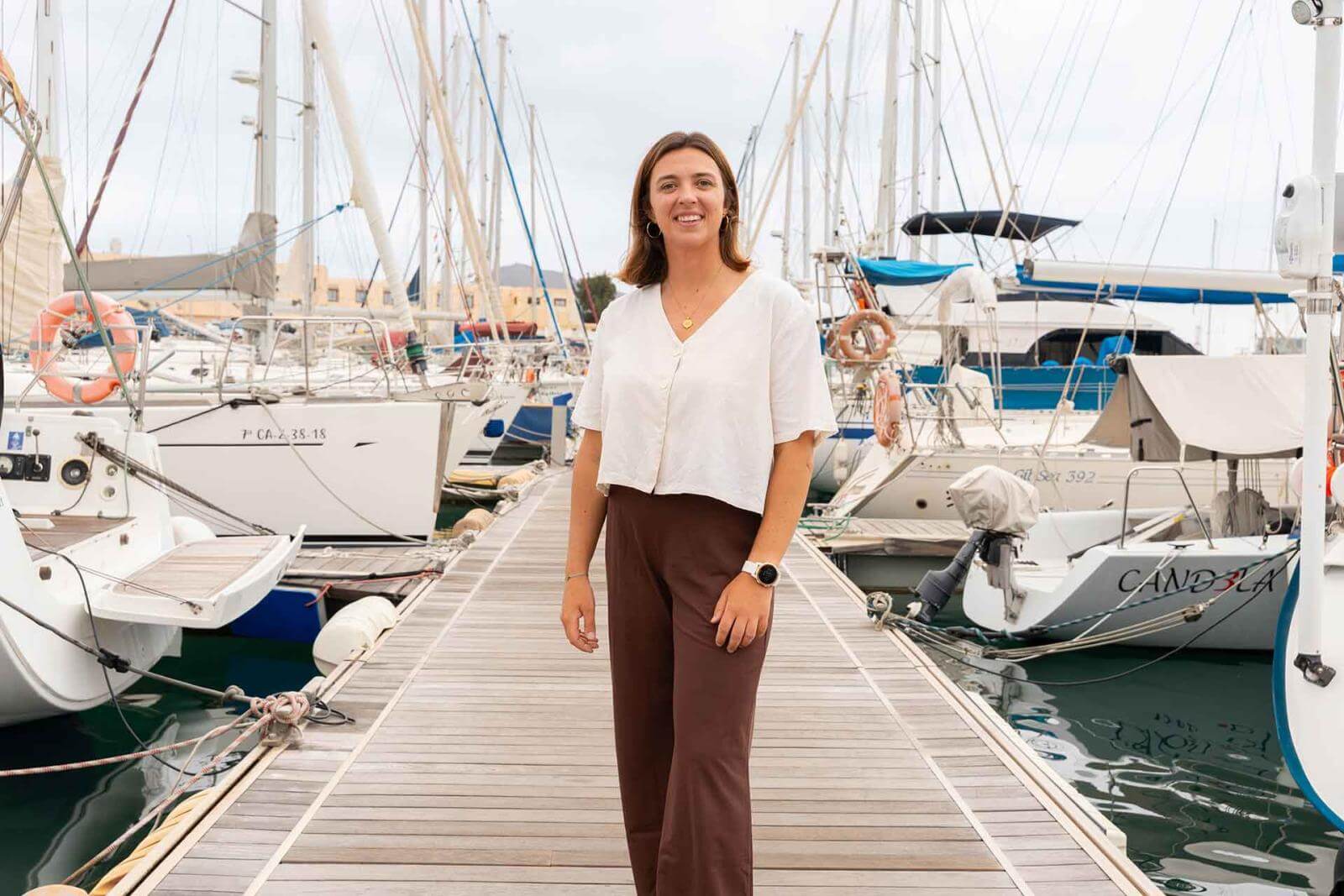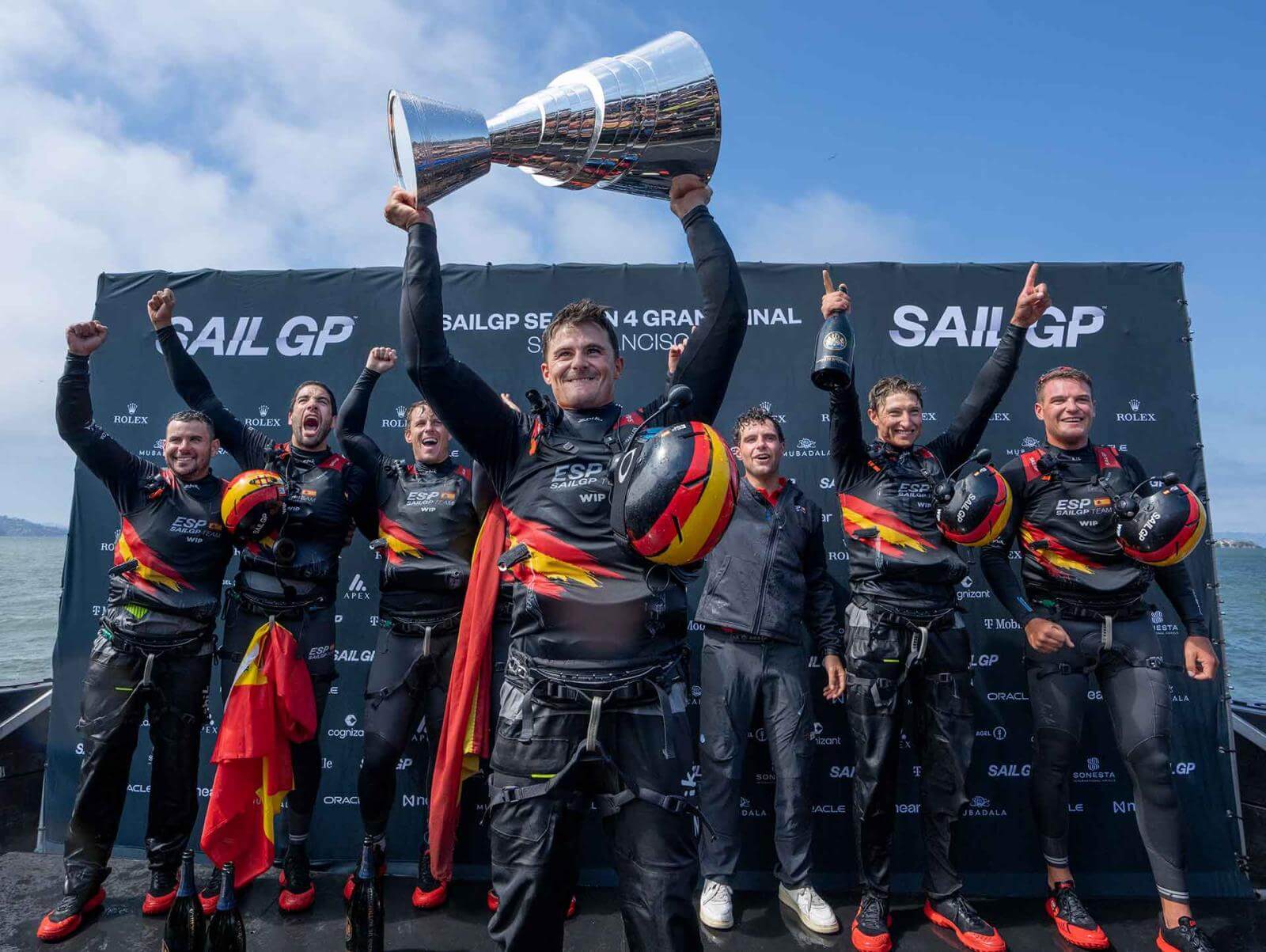The Canary Islands have always been a recognised cradle of sailing talent. Its exceptional conditions have historically cultivated an inexhaustible fleet of sailors who have shone among the international elite. Today, María Cantero (Las Palmas de Gran Canaria, 1997) and Joel Rodríguez stand out as two of the guiding lights of a generation that continues to expand the archipelago’s footprint at the height of the global sailing scene.
In the Canary Islands, the sea is not just a stage, it is also a school. This environment shapes, demands, and transforms. From the constant trade winds to the volcanic coasts and a culture deeply linked to water, the archipelago has been home to generations of sailors who have competed—and shone—through the most demanding circuits. María Cantero and Joel Rodríguez are heirs to this living legacy, and at the same time, promoters of its international visibility. Their trajectories have some points in common: their passion for sailing, their demand for high performance, and, above all, the permanent drive of the islands that taught them to master the wind.
“The Canary Islands are a magnificent setting for outdoor sports like sailing”, explains Joel. “From a very young age, I was able to dedicate many hours to the sport thanks to how much sunshine and good weather we get, especially in winter. That made me stand out at a very early age among the world fleet.” María corroborates this from her own family history: “For me, growing up in the archipelago 100% had an influence on my career as a sailor. My parents sailed and my grandfather was the president of the Real Club Náutico de Gran Canaria. The sea is in my blood.”
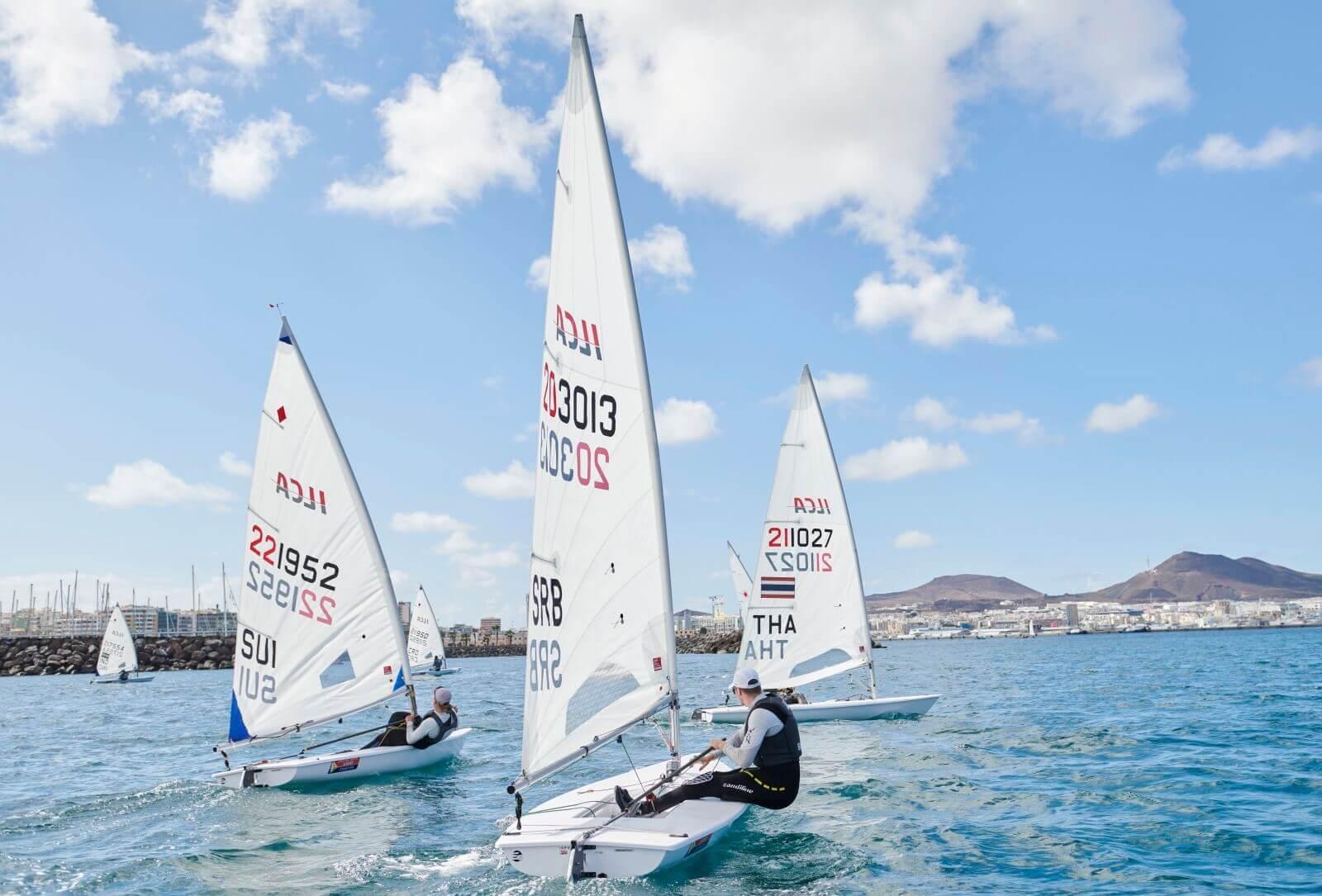
Sailing as a way of life
From those first days on a little Optimist up to the big competitions, María and Joel understood that the sea is not only a place to sail, it is also a place to learn. “The sea was our playground,” recounts Maria. “And the islands, a constant invitation for sports. Alone on the boat, dealing with the elements, you learn to clear your head very quickly."
“The weather conditions are fundamental, and the Canaries are ideal all year round,” adds Joel. “You can choose from all the different wind and wave scenarios as you sail along the coastline.” This privileged environment not only gave them hours of practice, but also shaped their mentality. In the Canary Islands, sailing is a culture, a way of growing up.
Epicentre of sailing
Today, the archipelago is one of the world's leading enclaves for training, especially in winter. Lanzarote has attracted hundreds of Olympic sailors. The natural conditions, together with first-class facilities, have made the archipelago world-renowned. “There is never a day when you can't go out on the water. That’s why many Olympic athletes chose this destination to prepare for the Tokyo and Paris Olympic Games. The water isn’t all they came for, but also for everything the land has to offer," explains Maria. “The nautical atmosphere here is what gets you hooked.”
Amidst the current boom in Olympic sailing, Marina Rubicón, located in Lanzarote, has played a pivotal role. At Tokyo 2020, 21 of the sailors who reached the Olympic podium had, at some stage in their preparation, chosen this marina as their training base; for Paris 2024, the figure stood at 19. During that same season, between October and March, the marina hosted 1,200 athletes from 24 countries, and was the venue for two Olympic qualifying events, as well as 24 championships spanning eight different Olympic sailing classes, including four official Olympic disciplines.
Moreover, nearly all European sailing federations now maintain a permanent base at Marina Rubicón. The venue regularly hosts events such as the iQFOiL circuit, the Lanzarote International Regatta – now scheduled for 2026 – the ILCA U21 World Championship (set for 16 January), and part of the TP52 Super Series between June and July.
That atmosphere, coupled with international recognition, has positioned the Canary Islands as a strategic hub for international sailing. But the impact goes beyond sport. “Bringing competitions such as the Youth Sailing World Championship to La Palma in 2027 and 2028 gives young people a reference point. I remember seeing Olympic sailors in my club and thinking, ‘I want to be there too.’ That meant the world to us... Fifteen years later, I’m in the same competitions with them. That changes everything," Maria reflects.
From the America's Cup to the Olympic dream
In 2024, Maria made history by taking part in the first women's edition of the America's Cup. “We couldn't wrap our minds around the idea that a girl could compete in that historic race. I don't think we were aware of what we were experiencing. I remember us being so happy... and with time, you understand that we opened a door. I want more girls to see that you can get there, and I hope that this was not the exception; rather, that it’s the new norm.”
With that momentum, this 2025, she has begun a new stage: the Olympic campaign towards Los Angeles 2028. She will be sailing alongside Paula Barceló, a double Olympian, in a new tandem led by Xabi Fernández, one of the most respected sailors in the world. “I want to get to the Games and fight for a medal. But what really motivates me is the journey. Feeling that you’re making progress, that you’re learning, that you’re part of something of your own, and something shared. You don’t improvise. You build it. It’s as if I were in love with the project, because of the team, because of the values, because I feel like it’s being done well. I think the project itself is so beautiful that I would hope the human value would be highlighted as well.”
The first big test will be the World Cup in Cagliari in October 2025. But the focus is further away. “We don’t just want to be the best Spanish boat. We want to be the best boat in the world, to establish ourselves as the leading team,” he says.
They will have to put forth an enormous effort to achieve this, and training is essential. “My heartbeat can go up to 190 bpm during a regatta. I need to make quick decisions in extreme situations. Sailing is like a game of chess, and during the manoeuvres, I have to be able to cross the boat like a gazelle,” he explains.
The revolution of the sea
Joel Rodríguez leads another dimension of elite sailing. He is the flight controller of the Spanish team in SailGP, the most spectacular and technological league in the sailing world. “It’s a dream to be part of SailGP. The boats are amazing, the circuit brings together the best sailors on the planet, and it's got the highest level of demand.”
In May 2025, the Spanish team, which won the SailGP title in the 2024 season, received the award for Best Foiling Team at the Foiling Awards. “I’m so pleased to see how this team is growing. This kind of recognition encourages us to keep giving 100%,” says Joel.
Despite his involvement in SailGP, Rodríguez is also looking ahead to the Olympic cycle. After competing in ILCA 7 at Tokyo 2020, he is now alternating his participation in different classes to make it to Los Angeles with more experience. “I’m sailing different boats this first year of the Olympic cycle, which will give me a lot of knowledge for the end of the cycle, where you have to dedicate more time to the Olympic boat.
Back home
Despite their international calendars, both maintain a close link with the Islands. For María, her refuge is the beach of San Felipe, in the north of Gran Canaria. “After training, I go there to read or surf.” Joel mentions that Playa de Montaña Arena, also in GC, is linked to his family memories and carries his most intimate connection with the sea. For him, the archipelago is life.
Both assert the role of the Canary Islands in the development of sailing and professional sport. “There are stories that inspire, and values that deserve support,” reflects María. “And the Canary Islands is the perfect place for those stories to begin.”
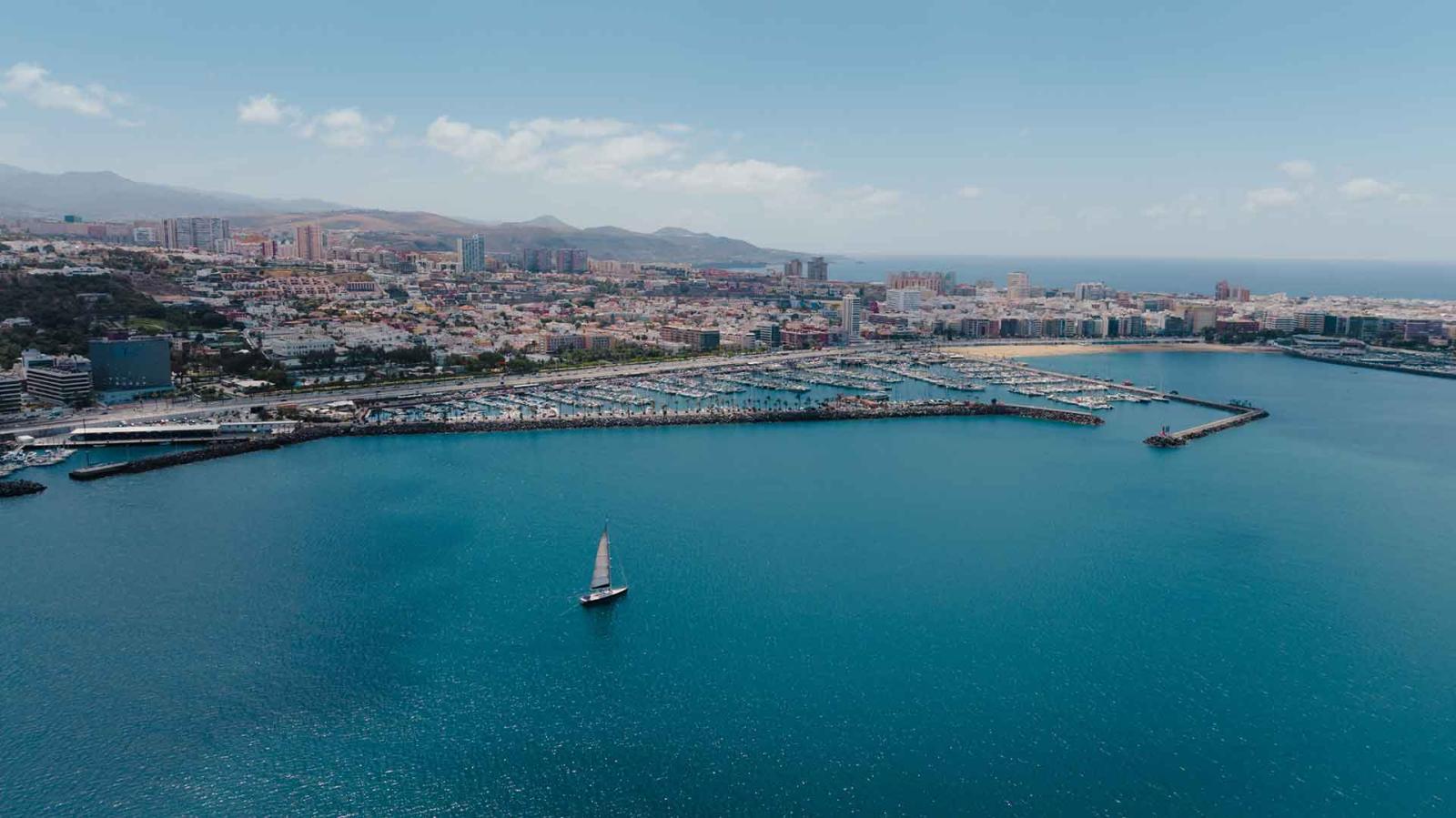
How would you define the Canary Islands in one word?
MARÍA CANTERO: Spectacular.
JOEL RODRÍGUEZ: Life.
What's your favourite spot on the islands that you always want to go back to and why?
MARÍA CANTERO: There is one beach in particular in Gran Canaria, San Felipe, on the north of the island, where you can do everything. I’d say it’s half wild and it’s where I always go back to after training, to read or swim, to surf. It gives me the energy to keep going back.
JOEL RODRÍGUEZ: Playa de Montaña Arena. I've been there a lot with my family, and it’s been especially valuable for me in terms of practising sports.
What nautical or natural experiences would you recommend to someone who is going to the Canary Islands for the first time?
MARÍA CANTERO: Activities such as windsurfing, kitesurfing, windfoiling... For those who aren’t fans of the water, get a bike and go mountain biking, road biking, or hiking. There are several trails on the island. I love the inland part of Gran Canaria, the mountains. I think people associate the Canary Islands too much with the sun and the beach, and they don’t get much of an idea about the vegetation on the islands.
JOEL RODRÍGUEZ: Obviously, it depends on your taste, but if they move around the islands, there are many places—both in the sea and in the mountains—that are spectacular for outdoor activities.
What have the waters of the Canary Islands taught you that they haven’t taught you anywhere else in the world?
MARÍA CANTERO: Struggling with 30 knots every day.
JOEL RODRÍGUEZ: I learned to sail there. Since I was very young, I’ve spent many hours in the waters of the Canary Islands and I’ll carry that with me for the rest of my life.
